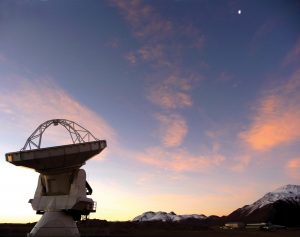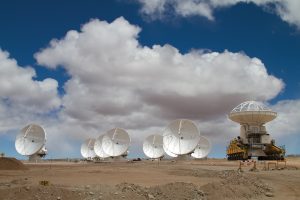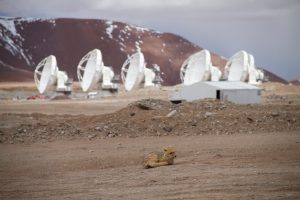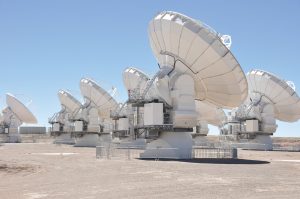ALMA with 55 antennas in March 2013. The Atacama Compact Array is clearly visible as the tightly-grouped set of smaller antennas. The Array Operations Site Technical Building shines in the back, with the final North American antenna behind it.


Supermoon 2011 Over ALMA
On March 19, 2011, the Moon was closer to us than it had been in 20 years. Here, in its waning gibbous phase after the full phase, it sits above the 16,500-foot elevation ALMA telescope site in northern Chile.

Another antenna added to ALMA’s high site
Another North American ALMA antenna rides into the 16,500-foot elevation high site in northern Chile on the back of the 130 ton transporter. This 12-meter antenna joins the growing array in this photo taken in 2011.

Wildlife at the high site
An Andean Fox is a frequent visitor to the ALMA Array Operations Site, 16,500 feet up in the Chilean Andes. Other frequent visitors at the high sight could include southern viscachas (members of the chinchilla family), vicugnas (members of the llama family) and hummingbirds.

Wide shot of ALMA’s clear blue skies
As the driest place on Earth, one can expect a lot of clear days on top of the Chajnantor plateau. Whenever there is precipitation, it doesn’t stay around long due to the high altitude and quick evaporation.

Inside the Atacama Array
ALMA is composed of 66 high-precision antennas. Fifty of these antennas are 12m antennas used for sensitive, high-resolution imaging. Shown here are several of the North American 12m antennas and towards the left is a Japanese 12m. These fifty 12m antennas are complemented by the Atacama Compact Array (ACA), also known as the Morita Array, composed of twelve closely spaced 7m antennas and four 12m antennas.





